Listen to this article
Listen to this article
Loading
Play
Pause
Options
0:00
-:--
1x
Playback Speed- 0.5
- 0.6
- 0.7
- 0.8
- 0.9
- 1
- 1.1
- 1.2
- 1.3
- 1.5
- 2
Audio Language
- English
- French
- German
- Italian
- Spanish
Open text
salvation army active in cuba. by christin davis. if you’re cuban, you turn to communism or to church. this according to teresa matos, a soldier of the salvation army havana central corps since 1993, who regularly attends services and volunteers. she was born in cuba but lived in the united states for 19 years before returning to cuba in the early 1980s to visit her grandmother. due to complicated circumstances, she has not been able to leave since. teresa matos_ photos by christin davis “it’s easy to take things for granted when you have everything,” matos said. “when you have so many comforts, it weakens your faith. when you don’t, you have to ask god for help. that is what we do.”. one of few remaining socialist states espousing communism, cuba’s turbulent history—from the 1898 spanish-american war to establishment of the communist party of cuba in 1965 and continued tension with the united states—has sidled the island’s lush beauty with decay. “the problem here is economics…the ‘taxes,’ the lack of jobs, the lack of supplies and the overpricing of supplies…it is difficult to live in cuba,” she said. matos teaches under-the-table english lessons, and has no computer or tv. “when you look around, it looks like everybody is living normally. but it’s very hard. practically everyone you deal with wants to leave the country.”. for cuba’s 11 million people, the government still provides monthly food rations, free education and healthcare, yet the struggle to survive is real. for those who can get a job, average monthly earnings total roughly $20. the wall street journal and heritage foundation’s 2012 index of economic freedom ranked cuba 177 out of 179 countries. when the soviet union collapsed in 1992, its subsidies to cuba ended and the island country entered a rapid depression known as the special period. ever since, supplies have become more difficult to find, and more expensive. raul castro, acting president since 2006, has repeatedly lamented that cuba imported around 80 percent of the food it consumed between 2007 and 2009, at a cost of over $1.7 billion a year. things are slowly improving under the second castro president, who lifted bans on cubans owning mobile phones and computers, and in 2011 allowed citizens to buy and sell houses and cars. yet, like the 1950s cars cubans manage to keep running, the people must scheme and dream in order to survive in this land of gritty street rumba. majors john and brenda murray, lt. col. susan van duinen (ontario central east), lts. jorge and alina contreras (diezmero corps), lt. cols. josue and ruth cerezo (latin america north), and captain julio moreno. the blood and fire. the salvation army began work in cuba in the early 1900s with missionary officers, was officially recognized in 1918 and operated until 1958 when the last overseas officer left the island upon signs of revolution, according to captain julio moreno, divisional commander in cuba and a former inspector for the government. for 10 years, moreno said, cuban people continued the army’s work without the knowledge of international headquarters. “cuba was without any link to the salvation army outside the country,” moreno said, until a cuban officer went to an event in jamaica. it soon after joined the caribbean territory until the formation of the latin america north territory in 1999. in the early years of rule by fidel castro, who claimed control of cuba following the 26th of july movement in 1959, religion was suppressed—including nationalizing church property, distributing anti-religious propaganda, and preventing believers from professions—for decades to seemingly avoid any ideological threat to the regime. the cuban communist party removed atheism as a prerequisite for membership in 1991 and permitted religious believers to join for the first time. a year later it amended the constitution to deem itself a secular state rather than an atheist state—“opening” religion, many believe, as a result of the end of soviet union supplies. yet to each faith community, the office of religious affairs (ora) assigns representatives to sporadically attend events and bring any concerns to government attention. today, the salvation army in cuba operates 22 corps and two social service projects—a senior home and an addictions recovery program—with 24 officers. the army is a member of the cuban council of churches. “according to the constitution we guarantee the freedom of religious expression as in any other part of the world,” said maria delos angelas perec, a senior ora official representing the christian churches, though not an attendee of any church. “essentially, we work together—the church and the government—to better help people. we work with legality and love to build good for people, to love people as we love ourselves.”. perec said the ora approved 9,000 religious visas for foreigners coming to cuba in 2012. “as the government, we appreciate the church but we know the community appreciates it more,” she said. “the salvation army is a church for service to the people, the community. the best thing cuba has is the people.”. for the salvation army, too, the people are key. commissioners william and marilyn francis, usa eastern territory officers who served as territorial leaders in canada and bermuda from 2007 until retirement in 2011, initiated support for a canadian mission to cuba. “we’ve been hampered in our ability to help cuba at all from the states, but canada is well-positioned to do so,” said william francis, who continues to serve in retirement as chairman of the international doctrine council. with his early support, majors john and brenda murray of the ontario central east division have for the past five years organized self-funded projects, in partnership with the cuba division, to improve facilities for the army in the caribbean. “i was amazed at the strength of the army there. many have known nothing else but fidel castro and communist rule, but through all of that the people have kept the joy of the lord,” said francis, who attended the first four years of project dedications with his wife. “that’s a wonderful verse, but when you see it embodied in people it takes on new meaning.”. mission:cuba met its end may 2 in havana, cuba, with the dedication of two new corps—the last of 13 capital projects completed. projects have included 150 canadian team member volunteers, ranging in age from 14 to 81, including students, a farmer, a retired policeman, and contractors. “after five years, the profile of the salvation army has increased dramatically here, and the government has a better understanding of the role and function of the salvation army and what it can do to assist in disaster and humanitarian projects,” john murray said, noting the cuban government’s request of assistance from the salvation army following hurricanes in recent years. “this is about more than building projects; it’s about building community, mission and building god’s church.”. team members cory frost and mallory jennings buy fruit in paraga for the team lunch mission:cuba began each august when a pre-team visited the island to meet with salvation army staff and survey areas of priority need with a contractor. an itemized, 12-page list of materials was sent to the cuban government for approval, upon which every item was shipped in a 40-foot container. members of this pre-team had to then be on-site when the container was approved for release, generally in january. the materials were stored with the army in cuba until the spring projects began. this year, mission:cuba 5 included 25 team members who each paid his or her own way to volunteer there. “we always leave behind a big, bright building and people come to look,” said paul robertson, one of the team’s contractors and a member of mission:cuba since the beginning, who oversaw a 50-foot roof installation this year. “we attract attention while we’re building, and people stop to ask what’s going on. you never know who’s being affected, but we know these places are beacons for the community.”. at the paraga corps, mission:cuba 5 completed a 33-foot roof and added two rooms to the officers’ quarters, which previously only had one room for the family. the team turned an unusable property at the diezmero corps—the officers had been holding services inside their home—into an expansive church. both project sites were painted inside and out, and mission:cuba 5 also paid for a fence to be put in at the salvation army’s newly opened training college for officers in cuba. “these people have become almost family,” said brenda murray. “they said they had been praying for god to send someone, and i’d been praying that god would use me. what’s so strong about this is that it isn’t about canadians showing cubans how to do things, but partnering together so that everyone benefits out of it.”. the partnership may have ended in its current form as the murrays move to appointments at international headquarters, but for those who remain in cuba the work continues. “i imagine that cuba is very beautiful place; tourists always say it is,” matos said. “i’m just waiting, and i have a lot of faith. as long as jesus is there everything is ok.”. for a deeper look at religion and the salvation army in cuba, read the fall 2013 issue of caring and follow caringmagazine.org.
Open context player
Close context player
Plays:-Audio plays count
salvation army active in cuba. by christin davis. if you’re cuban, you turn to communism or to church. this according to teresa matos, a soldier of the salvation army havana central corps since 1993, who regularly attends services and volunteers. she was born in cuba but lived in the united states for 19 years before returning to cuba in the early 1980s to visit her grandmother. due to complicated circumstances, she has not been able to leave since. teresa matos_ photos by christin davis “it’s easy to take things for granted when you have everything,” matos said. “when you have so many comforts, it weakens your faith. when you don’t, you have to ask god for help. that is what we do.”. one of few remaining socialist states espousing communism, cuba’s turbulent history—from the 1898 spanish-american war to establishment of the communist party of cuba in 1965 and continued tension with the united states—has sidled the island’s lush beauty with decay. “the problem here is economics…the ‘taxes,’ the lack of jobs, the lack of supplies and the overpricing of supplies…it is difficult to live in cuba,” she said. matos teaches under-the-table english lessons, and has no computer or tv. “when you look around, it looks like everybody is living normally. but it’s very hard. practically everyone you deal with wants to leave the country.”. for cuba’s 11 million people, the government still provides monthly food rations, free education and healthcare, yet the struggle to survive is real. for those who can get a job, average monthly earnings total roughly $20. the wall street journal and heritage foundation’s 2012 index of economic freedom ranked cuba 177 out of 179 countries. when the soviet union collapsed in 1992, its subsidies to cuba ended and the island country entered a rapid depression known as the special period. ever since, supplies have become more difficult to find, and more expensive. raul castro, acting president since 2006, has repeatedly lamented that cuba imported around 80 percent of the food it consumed between 2007 and 2009, at a cost of over $1.7 billion a year. things are slowly improving under the second castro president, who lifted bans on cubans owning mobile phones and computers, and in 2011 allowed citizens to buy and sell houses and cars. yet, like the 1950s cars cubans manage to keep running, the people must scheme and dream in order to survive in this land of gritty street rumba. majors john and brenda murray, lt. col. susan van duinen (ontario central east), lts. jorge and alina contreras (diezmero corps), lt. cols. josue and ruth cerezo (latin america north), and captain julio moreno. the blood and fire. the salvation army began work in cuba in the early 1900s with missionary officers, was officially recognized in 1918 and operated until 1958 when the last overseas officer left the island upon signs of revolution, according to captain julio moreno, divisional commander in cuba and a former inspector for the government. for 10 years, moreno said, cuban people continued the army’s work without the knowledge of international headquarters. “cuba was without any link to the salvation army outside the country,” moreno said, until a cuban officer went to an event in jamaica. it soon after joined the caribbean territory until the formation of the latin america north territory in 1999. in the early years of rule by fidel castro, who claimed control of cuba following the 26th of july movement in 1959, religion was suppressed—including nationalizing church property, distributing anti-religious propaganda, and preventing believers from professions—for decades to seemingly avoid any ideological threat to the regime. the cuban communist party removed atheism as a prerequisite for membership in 1991 and permitted religious believers to join for the first time. a year later it amended the constitution to deem itself a secular state rather than an atheist state—“opening” religion, many believe, as a result of the end of soviet union supplies. yet to each faith community, the office of religious affairs (ora) assigns representatives to sporadically attend events and bring any concerns to government attention. today, the salvation army in cuba operates 22 corps and two social service projects—a senior home and an addictions recovery program—with 24 officers. the army is a member of the cuban council of churches. “according to the constitution we guarantee the freedom of religious expression as in any other part of the world,” said maria delos angelas perec, a senior ora official representing the christian churches, though not an attendee of any church. “essentially, we work together—the church and the government—to better help people. we work with legality and love to build good for people, to love people as we love ourselves.”. perec said the ora approved 9,000 religious visas for foreigners coming to cuba in 2012. “as the government, we appreciate the church but we know the community appreciates it more,” she said. “the salvation army is a church for service to the people, the community. the best thing cuba has is the people.”. for the salvation army, too, the people are key. commissioners william and marilyn francis, usa eastern territory officers who served as territorial leaders in canada and bermuda from 2007 until retirement in 2011, initiated support for a canadian mission to cuba. “we’ve been hampered in our ability to help cuba at all from the states, but canada is well-positioned to do so,” said william francis, who continues to serve in retirement as chairman of the international doctrine council. with his early support, majors john and brenda murray of the ontario central east division have for the past five years organized self-funded projects, in partnership with the cuba division, to improve facilities for the army in the caribbean. “i was amazed at the strength of the army there. many have known nothing else but fidel castro and communist rule, but through all of that the people have kept the joy of the lord,” said francis, who attended the first four years of project dedications with his wife. “that’s a wonderful verse, but when you see it embodied in people it takes on new meaning.”. mission:cuba met its end may 2 in havana, cuba, with the dedication of two new corps—the last of 13 capital projects completed. projects have included 150 canadian team member volunteers, ranging in age from 14 to 81, including students, a farmer, a retired policeman, and contractors. “after five years, the profile of the salvation army has increased dramatically here, and the government has a better understanding of the role and function of the salvation army and what it can do to assist in disaster and humanitarian projects,” john murray said, noting the cuban government’s request of assistance from the salvation army following hurricanes in recent years. “this is about more than building projects; it’s about building community, mission and building god’s church.”. team members cory frost and mallory jennings buy fruit in paraga for the team lunch mission:cuba began each august when a pre-team visited the island to meet with salvation army staff and survey areas of priority need with a contractor. an itemized, 12-page list of materials was sent to the cuban government for approval, upon which every item was shipped in a 40-foot container. members of this pre-team had to then be on-site when the container was approved for release, generally in january. the materials were stored with the army in cuba until the spring projects began. this year, mission:cuba 5 included 25 team members who each paid his or her own way to volunteer there. “we always leave behind a big, bright building and people come to look,” said paul robertson, one of the team’s contractors and a member of mission:cuba since the beginning, who oversaw a 50-foot roof installation this year. “we attract attention while we’re building, and people stop to ask what’s going on. you never know who’s being affected, but we know these places are beacons for the community.”. at the paraga corps, mission:cuba 5 completed a 33-foot roof and added two rooms to the officers’ quarters, which previously only had one room for the family. the team turned an unusable property at the diezmero corps—the officers had been holding services inside their home—into an expansive church. both project sites were painted inside and out, and mission:cuba 5 also paid for a fence to be put in at the salvation army’s newly opened training college for officers in cuba. “these people have become almost family,” said brenda murray. “they said they had been praying for god to send someone, and i’d been praying that god would use me. what’s so strong about this is that it isn’t about canadians showing cubans how to do things, but partnering together so that everyone benefits out of it.”. the partnership may have ended in its current form as the murrays move to appointments at international headquarters, but for those who remain in cuba the work continues. “i imagine that cuba is very beautiful place; tourists always say it is,” matos said. “i’m just waiting, and i have a lot of faith. as long as jesus is there everything is ok.”. for a deeper look at religion and the salvation army in cuba, read the fall 2013 issue of caring and follow caringmagazine.org.
Listen to this article











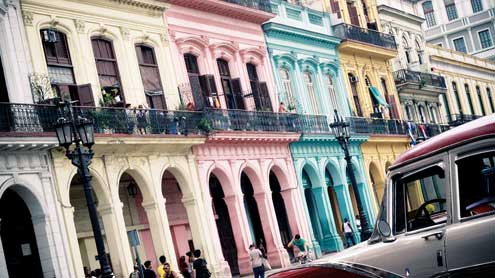
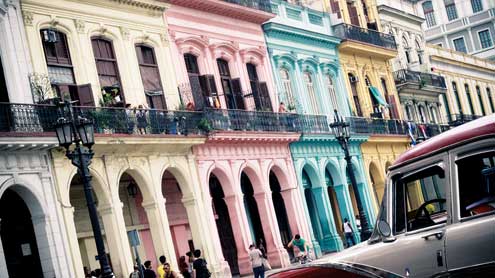
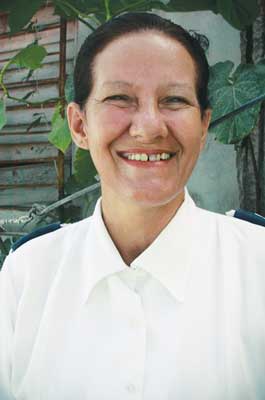
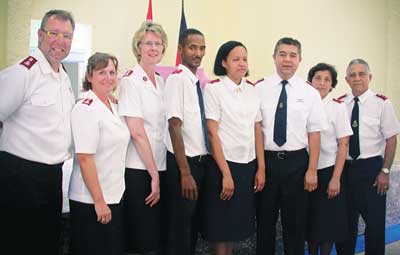
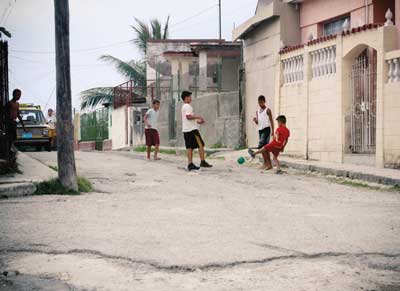
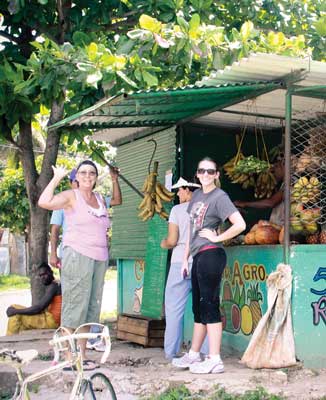
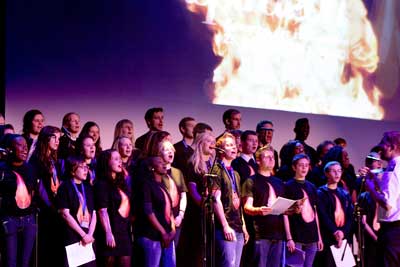


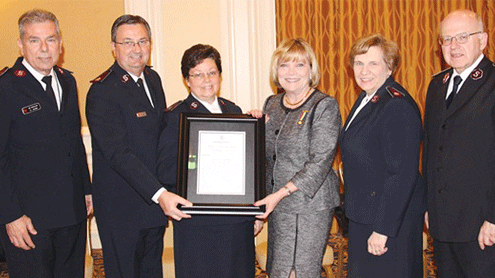
Iam trying to contact Salvation Army in Habana,one friend who lives in Canada have serious helth problems, She and her husband are salvation army leaders and they need me to go to their country to take care of their health, so I come to you to find out if you can help me , iam a registered nurse who lives in Cuba ,and i dont know what i have to do.
Regards.
Hi Mayra,
Thank you for your message and the opportunity to help. Please email new.frontier@usw.salvationarmy.org and we can connect you with the correct location.
Best,
Cory